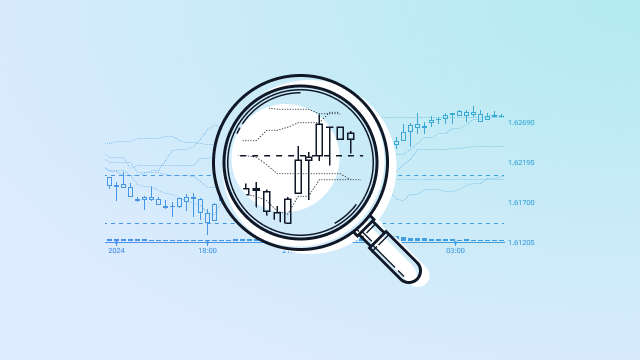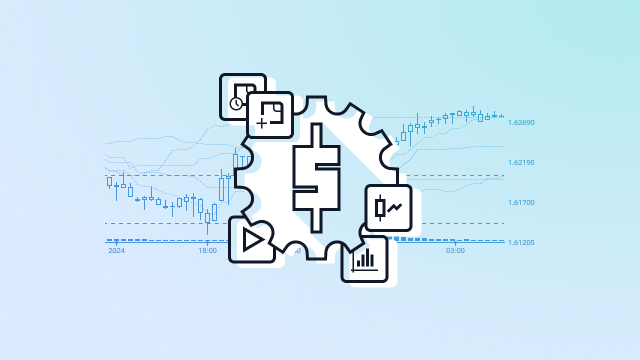Technical analysis is key in trading, and the Hull Moving Average (HMA) is a top tool. It was made to fix the flaws of old moving averages. It gives traders a more precise and quick indicator.
The HMA is important in technical analysis. It cuts down the lag of old moving averages. This lets traders make better choices. By using the HMA in their plans, traders can spot trends and the best times to buy or sell.
Key Takeaways
- The Hull Moving Average is a refined technical analysis tool designed to minimize lag.
- It is used to identify trends and trading opportunities more effectively.
- Traders can incorporate the HMA into their trading strategies to enhance decision-making.
- The HMA is useful in volatile markets where old indicators fail.
- By using the HMA, traders can potentially improve their trading outcomes.
What Makes the Hull Moving Average Unique
The Hull Moving Average stands out in technical analysis. It’s known for cutting down on lag and making trend spotting better. This unique indicator has caught the eye of many traders and analysts.
Definition and Core Functionality
The Hull Moving Average is a special kind of moving average. It uses a weighted average of price changes to show trends more clearly. Its main job is to smooth out price data while keeping up with recent changes.
Alan Hull’s Innovation in Technical Analysis
Alan Hull’s creation of the HMA brought a big change to technical analysis. It cut down on the lag of traditional moving averages. This helps traders make better choices with more accurate and timely data.
Key Differences from Traditional Moving Averages
The HMA and traditional moving averages differ in several ways:
- It has less lag because of its weighted average method
- It’s more responsive to recent price changes
- It smooths out price data better
These differences make the HMA a great tool for traders looking to improve their analysis.
The Mathematical Framework of the Hull Moving Average
The Hull Moving Average (HMA) uses a special math framework. It’s different from other moving averages. This framework helps reduce lag and keeps the average smooth, making it useful for traders.
Breaking Down the HMA Formula
The HMA formula is complex. It starts with a weighted moving average (WMA) of prices over a short period, like 16 or 32 days.
Weighted Moving Average Components
The HMA uses WMAs to focus on recent prices. This makes it more responsive to market changes. It’s better than simple moving averages, which don’t differentiate between data points.
| Component | Description | Impact on HMA |
|---|---|---|
| WMA | Weighted Moving Average | Gives more weight to recent prices |
| Period | Time frame for calculation | Affects the responsiveness of HMA |
| Square Root Period | Square root of the period | Reduces lag by smoothing the average |
The Significance of the Square Root Period
The square root of the period is key in the HMA formula. It helps make the HMA more responsive to price changes.
How Calculations Reduce Lag
The HMA uses WMAs and the square root of the period to cut down on lag. This approach emphasizes recent prices and smooths the average. It makes the HMA a reliable tool for traders.
Hull Moving Average vs. Other Moving Averages
The Hull Moving Average (HMA) is unique among moving averages. It combines speed and smoothness in a special way.
Comparison with Simple Moving Average (SMA)
The Simple Moving Average (SMA) averages the price of a security over time. It treats all data equally. HMA, on the other hand, uses weighted averages and the square root of the period. This makes it more responsive to recent price changes.
Key differences include:
- SMA gives equal weight to all prices in the period, while HMA emphasizes recent prices.
- HMA is more sensitive to recent price changes, potentially giving earlier signals.
Comparison with Exponential Moving Average (EMA)
Exponential Moving Average (EMA) also focuses on recent prices but exponentially. HMA uses a weighted moving average that is then smoothed. This might reduce the noise seen in EMA.
When comparing HMA to EMA:
- Both are more sensitive to recent price changes than SMA.
- HMA may offer a smoother trend line than EMA.
Comparison with Weighted Moving Average (WMA)
Weighted Moving Average (WMA) also gives more weight to recent data, like HMA. But HMA’s calculation with the square root of the period makes it less laggy.
When to Choose HMA Over Alternatives
Choose HMA when you need a balance between responsiveness and smoothness. It’s great in trending markets where reducing lag is key.
Setting Up the Hull Moving Average on Trading Platforms
The Hull Moving Average is a key tool for traders. It can be set up in MetaTrader and TradingView with some guidance. This guide will walk you through how to configure the HMA on these platforms.
Step-by-Step Configuration in MetaTrader
To start, open MetaTrader and go to the “Insert” menu. Choose “Indicators,” then “Custom,” and pick the Hull Moving Average. Adjust the period and settings to fit your trading strategy.
Implementation Guide for TradingView
In TradingView, click the “Indicators” button at the top of your chart. Search for “Hull Moving Average” and pick it. Change the length to fit your analysis needs.
Custom Settings for Optimal Performance
Customizing the HMA means adjusting its period. A shorter period makes it more sensitive to price changes. A longer period gives a smoother average.
Troubleshooting Common Setup Issues
Common problems include wrong period settings and not adjusting the HMA to market conditions. Make sure you’re using the right data feed and that your platform is up to date.
Step-by-Step Guide to Trading with the Hull Moving Average
The Hull Moving Average is a key tool for traders. It combines sensitivity and smoothness. This makes it great for spotting trend direction and strength, and for setting up entry and exit plans.
Identifying Trend Direction and Strength
The HMA helps show the direction and strength of market trends. A rising HMA means an uptrend, while a falling one shows a downtrend. The line’s slope and curve give clues about trend strength.
Developing Entry Signal Strategies
Traders can create entry signals with the HMA. For example, a buy signal happens when the price goes above the HMA. A sell signal occurs when the price drops below it.
Creating Exit and Take-Profit Rules
Exit and take-profit plans can also use the HMA. Traders might exit a long position if the HMA starts to fall or if the price drops below it. For short positions, they might exit when the HMA rises or if the price goes above it.
Position Sizing and Risk Management
Good risk management is vital when trading with the HMA. Traders should set their position size based on their risk tolerance. They should also adjust their stop-loss levels. The HMA can act as a dynamic stop-loss, helping to control losses.
Advanced Hull Moving Average Trading Strategies
The Hull Moving Average is a powerful tool for traders. It helps in analyzing markets and improving trading results. Traders can use it to spot trends, confirm signals, and manage risks.
The HMA Crossover Strategy
The HMA crossover strategy uses two HMAs to find buy and sell signals. A short-period HMA crossing over a long-period HMA is a bullish sign. A short-period HMA crossing under is bearish.
Combining HMA with Support and Resistance Levels
Using HMA with support and resistance levels makes trading signals more reliable. It helps traders feel more confident in their trades.
Multiple Timeframe HMA Analysis Technique
Looking at HMA on different timeframes gives a broader view of market trends. It helps traders spot consistent trends and possible reversals.
HMA with Volume and Momentum Indicators
Combining HMA with volume and momentum indicators like RSI and MACD offers a full view of market dynamics.
RSI and HMA Combination
Using RSI with HMA helps spot overbought or oversold conditions. It shows the trend indicated by the HMA.
MACD and HMA Confirmation Signals
The MACD indicator can confirm trading signals when used with HMA. When both indicators agree, it’s a strong sign for a trade.
Avoiding Common Pitfalls When Using the Hull Moving Average
Traders using the Hull Moving Average need to watch out for common mistakes. These can affect their trading choices. While HMA has many benefits, it can fail if not used correctly.
The Danger of Indicator Overreliance
Dependence on the Hull Moving Average alone can lead to bad trading choices. It’s important to use HMA with other indicators and analysis methods.
Finding the Optimal Period Settings
inding the right period settings for HMA is key. Traders should try different settings to see what fits their strategy best.
Adjusting for Different Market Conditions
Market conditions can change how well HMA works. Traders must adjust their HMA settings to keep it performing well.
Backtesting Your HMA Strategy
Backtesting is essential to check if an HMA strategy works. It helps find and fix any issues with the strategy.
Mastering the Hull Moving Average for Trading Success
The Hull Moving Average is a key tool for traders in complex markets. It helps them understand market trends and make better decisions. By learning how it works, traders can improve their success.
Exploring HMA strategies shows its power in finding trend directions and managing risks. It can be used with other tools to create strong trading plans. This makes it a valuable asset for traders.
In conclusion, the Hull Moving Average gives traders a big advantage in today’s markets. It’s useful for following trends and for strategies that look for mean reversion. This makes it a flexible tool for reaching investment goals.
FAQ
What is the Hull Moving Average?
The Hull Moving Average (HMA) is a tool for analyzing the market. It was created by Alan Hull. It aims to show price action more clearly and quickly than traditional averages.
How does the Hull Moving Average differ from traditional moving averages?
The HMA is different from Simple and Exponential Moving Averages. It uses a special calculation that includes the square root of the period. This makes it more responsive and less laggy.
What is the significance of the square root period in HMA calculations?
The square root period is key in the HMA formula. It helps reduce lag by focusing more on recent price movements.
How do I set up the Hull Moving Average on my trading platform?
Setting up the HMA on platforms like MetaTrader and TradingView is easy. Just follow the guides for each platform. Adjust the settings to fit your trading style.
Can the Hull Moving Average be used in conjunction with other technical indicators?
Yes, you can use the HMA with other indicators. This includes RSI, MACD, and volume indicators. It helps create a strong trading strategy.
How do I determine the optimal period setting for the Hull Moving Average?
Finding the right period for the HMA depends on your strategy and the market. Test different periods to see what works best for you.
What are some common pitfalls to avoid when using the Hull Moving Average?
Avoid relying too much on the HMA. Don’t ignore changing market conditions. Also, always test your strategy before using it.
Can the Hull Moving Average be used for both trend identification and entry/exit signals?
Yes, the HMA is great for spotting trends and timing trades. It’s a flexible tool for traders.
Is the Hull Moving Average suitable for all types of trading strategies?
The HMA fits many strategies, but it’s not perfect for all. Its success depends on your strategy, the market, and how you use it.
 ไทย
ไทย
 Tiếng Việt
Tiếng Việt
 Polski
Polski
 Türkçe
Türkçe
 Nederlands
Nederlands
 Română
Română
 한국어
한국어
 Svenska
Svenska


